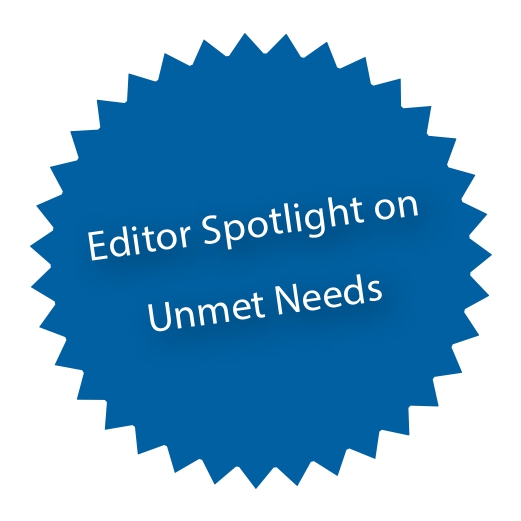The JAK3/TEC inhibitor ritlecitinib was assessed as a therapy for AA in the phase 2b/3 ALLEGRO (NCT03732807) trial, after recently demonstrating efficacy in a phase 2a study [1,2]. The enrolled participants were aged ≥12 years and had a ≥50% loss of scalp hair [1]. The double-blind, randomised-controlled trial included 718 patients who were treated in various dose regimens of ritlecitinib or placebo over 24 weeks. The dosages ranged from 10 mg over 24 weeks to 200 mg as a loading dose for the initial 4 weeks followed by 50 mg daily (200/50 group). This was followed by an extension period of another 24 weeks with treatment continuation in the active drug groups and a switch to ritlecitinib for the placebo group participants. The primary endpoint was the rate of patients reaching a SALT score ≤20. Secondary endpoints included achievement of SALT ≤10 and the proportion of participants who moderately or greatly improved their Patient Global Impression of Clinical Status (PGI-C) score.
The mean age of the participants was 34 years with 13.8% to 15.2% aged 12 to 17 years in the study arms. “The alopecia totalis and alopecia universalis groups were defined by a SALT score of 100 and, in the case of alopecia universalis, no eyebrows and no eyelashes, and this group comprised approximately 45% of participants across treatment arms,” Prof. Brett King (Yale University School of Medicine, CT, USA) commented on the baseline characteristics.
At week 24, the response rates for the primary endpoint were statistically significant for the 200/50 mg (31%), 200/30 mg (22%), 50 mg (23%), and 30 mg (14%) dosing regimens versus placebo (2%) with a P<0.001 for all comparisons. SALT ≤10 was achieved by 22%, 13%, 14%, and 11% of the same ritlecitinib dosing groups, respectively (P<0.002 for all comparisons). Treatment responses continued to rise for both SALT ≤20 and SALT ≤10 until week 48. As for PGI-C, the proportion of patients that were moderately or greatly improved ranged from 42% to 53% in the same groups (P<0.001 vs placebo).
The participants experienced adverse events at a rate of 71% on placebo and 69.4–75.4% in the ritlecitinib arms. Most common were headaches, nasopharyngitis, and upper respiratory infections, mostly mild to moderate. Severe adverse events occurred in 10 patients until week 24 and 14 patients up to week 48.
“In conclusion, ritlecitinib doses of 50 mg and 30 mg once daily with or without loading doses of 200 mg over 4 weeks were efficacious and generally well tolerated over 48 weeks in patients with AA,” concluded Prof. King.
- King B. Efficacy and safety of ritlecitinib (PF-06651600) in patients with alopecia areata and ≥50% scalp hair loss: results from the international ALLEGRO phase 2b/3 randomized, double-blind, placebo-controlled study (NCT03732807). D3T01.1C, EADV Congress 2021, 29 Sept–2 Oct.
- King B, et al. J Am Acad Dermatol. 2021;85(2):379–387.
Copyright ©2021 Medicom Medical Publishers
Posted on
Previous Article
« Hemophilia A gene therapy produces sustained benefit in 16 out of 18 volunteers Next Article
JAK1/2: A promising novel treatment target in alopecia areata »
« Hemophilia A gene therapy produces sustained benefit in 16 out of 18 volunteers Next Article
JAK1/2: A promising novel treatment target in alopecia areata »
Table of Contents: EADV 2021
Featured articles
Letter from the Editor
Long-term disease control in AD could be in reach with anti-OX40 antibody KHK4083
Late-Breaking News
Targeting OX40 in the treatment of atopic dermatitis meets expectations
Superior EASI scores after switch from dupilumab to upadacitinib
CSU: Novel agent targeting Bruton’s tyrosine kinase leads to disease control
Novel JAK3/TEC blocker leads to maintained re-pigmentation in vitiligo
TYK2 inhibitor deucravacitinib shows impressive long-term response in psoriasis
Tapinarof cream for psoriasis leads to high clearance rates and remittive effect
CSU: Ligelizumab likely safe and effective for adolescents
Long-term disease control in AD could be in reach with anti-OX40 antibody KHK4083
Topical JAK1/JAK2 inhibitor effective in vitiligo
Abrocitinib demonstrates fast itch control and skin clearance in atopic dermatitis
AD patients with stable response fare well with a monthly dose of tralokinumab
Opioid receptor agonist difelikefalin disappoints in AD
Atopic Dermatitis: State of the Art
Upadacitinib beats dupilumab in different body regions
Efficacious 2-year AD control with IL-13 inhibitor tralokinumab
Ruxolitinib cream: a safe treatment for elderly AD patients
Novel and upcoming targeted AD treatment
Psoriasis: What's New?
Existing and upcoming small molecules in psoriasis
Treating psoriasis during pregnancies
A patient-related approach to freedom of disease
Ixekizumab superior to secukinumab in real-world psoriasis study
Nail psoriasis: An important target to be treated
Grand debate: Is psoriasis a systemic or skin-only disease?
Spotlight on Alopecia Areata
JAK1/2: A promising novel treatment target in alopecia areata
Alopecia areata: encouraging response rates with JAK3/TEC inhibition
Related Articles
November 18, 2021
Nail psoriasis: An important target to be treated
November 18, 2021
Novel JAK3/TEC blocker leads to maintained re-pigmentation in vitiligo

November 18, 2021
Existing and upcoming small molecules in psoriasis
© 2024 Medicom Medical Publishers. All rights reserved. Terms and Conditions | Privacy Policy

